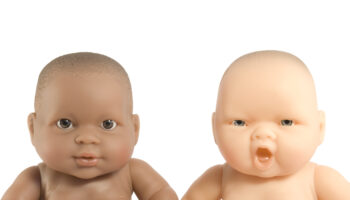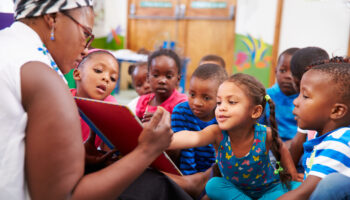Angel Avery-Wright
When an assessor walks into the room, one of the first things that catches our eye is the display: artwork, family photos, calendar, posters, and other photos. Do those other photos depict diversity?
Sometimes a photo will show a large family gathering that shows various ages of people. Sometimes those photos show a small intimate family portrait showing a mother, father and children and the parents are of mixed races. These two examples show diversity of age and race respectively.
Often, we will see several photos of one child, each wearing traditional clothing from a different country: Indian, Canadian, Greek, Mexican, etc. These often show diversity in culture and sometimes race as well.
It gets a little more difficult to see gender. A photo of a female fire fighter or a male hairdresser is not enough. To be considered diversity in the Environment Rating Scales (ERS), we look for a contrast, so there needs to be a female fire fighter and a male fire fighter. They can be in the same photo or different photos, but a contrast must be present. This goes for all the other types of diversity as well: age, culture, race, and abilities.
Books seem like they would be easy to express diversity but not always. When we look through the books, we look for all types of diversity. Is there a book that shows children wearing eyeglasses? Are there books that have fire fighters, both female and male? Books in other languages as well as books of tales from other cultures count as cultural diversity. In most cases we are looking for 3-4 examples of each kind in books.
Materials are also important for teaching diversity. Baby dolls of different races are usually present, but again a contrast is needed. Dolls for doll houses and puppets also come in various diverse genres: age, culture, race, abilities and even gender.
Play food is an easy way to incorporate diverse foods. Spaghetti, pizza, tacos, kabobs, sushi, hamburgers are just a few. Dramatic play diversity doesn’t have to be just dolls and foods. Utensils such as chopsticks (Chinese), dishes such as rice steamers (Japanese) and carved wooden bowls (African) can also be added to teach about various cultures. An inexpensive way to incorporate cultural diversity in dramatic play is to include menus from restaurants serving American food, Chinese food, Italian food, Thai food, and anything else you can find. You can even make your own menus by cutting out photos from magazines and newspapers.
Providing diversity in your classroom helps teach acceptance to young children, but remember, higher quality programs have photos, books, and materials accessible with contrasting examples.




